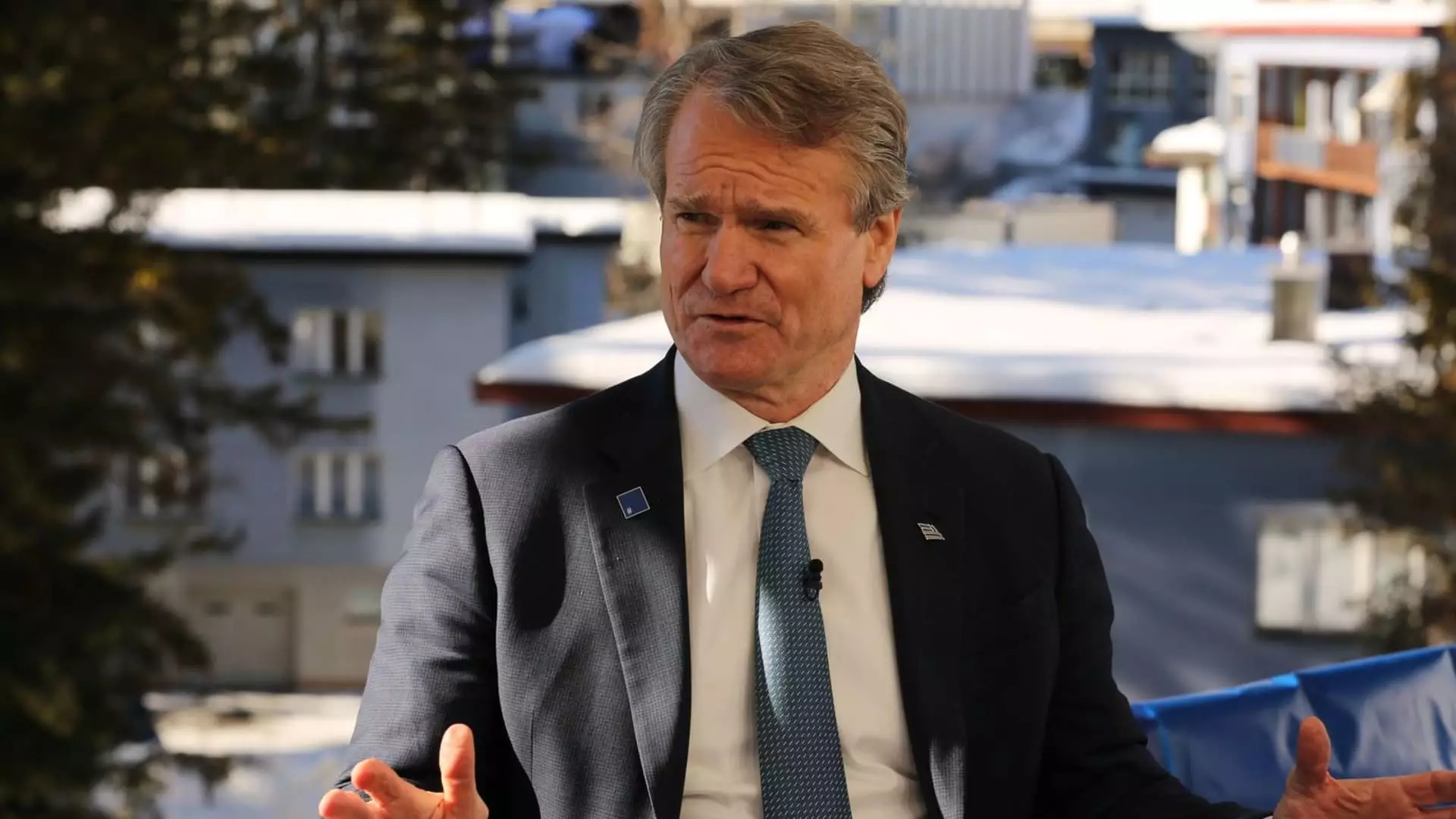In a recent analysis, Bank of America CEO Brian Moynihan highlighted a notable trend in consumer spending that seems to signal stability in the broader economic landscape. Over the initial weeks of the new year, consumer expenditures have increased by approximately 6% in comparison to the same timeframe last year. This figure represents an exciting uptick from the spending patterns observed in the latter part of 2023, suggesting a robust consumer confidence and a resilient economy. The data, conveyed during Moynihan’s interview with CNBC, underscores an essential link between consumer behavior and monetary policy.
Moynihan emphasized how this elevated level of consumer activity has implications for demand and pricing. “That’s driving price firmness, demand firmness,” he stated, indicating a relationship between consumer vigor and inflationary pressures in the economy. As consumer spending sustains its momentum, it sets the stage for potential implications on the Federal Reserve’s monetary policy approach regarding interest rates.
The implications of Moynihan’s insights were further complicated by the Bureau of Labor Statistics’ report on the consumer price index, which revealed stronger-than-expected inflation growth. This recent data forced analysts and market participants to reevaluate their expectations related to future interest rate cuts by the Federal Reserve. While the Fed has embarked on an easing cycle, commencing its first rate cut since the pandemic-triggered economic upheaval in September 2023, the persistent nature of inflation adds complexity to any decisions regarding further cuts.
Analysts are grappling with a duality: whether consumer spending, which reflects strength in economic activity, can effectively combat rising inflation. Moynihan alluded to this interplay, remarking that while “rates are restrictive,” there has not been sufficient progress in curtailing inflation to warrant additional rate cuts. It raises critical questions about the Fed’s capacity to maneuver in this economic environment without stoking further inflationary pressures.
The consensus among Bank of America analysts appears to align with Moynihan’s outlook, projecting no immediate rate cuts due to the ongoing concerns surrounding inflation. The interplay between consumer confidence, spending behaviors, and the Federal Reserve’s policy stance indicates a precarious balance that could shape the financial landscape in the coming months.
As consumers continue to spend robustly, their contributions to price stability and economic growth will be watched closely. The Fed’s next moves will invariably depend on the evolving economic indicators, particularly inflation measures and consumer confidence. This scenario will be pivotal for economic stakeholders—including businesses, investors, and consumers—who may need to adjust their strategies in response to a potentially prolonged period of steady interest rates.
Ultimately, while consumer spending shows signs of resilience, the overarching economic narrative remains complex. As the Federal Reserve navigates this intricate terrain, the interplay of consumer behavior and inflation dynamics will be critical in shaping future monetary policy decisions. The road ahead holds significant implications, making it essential for stakeholders to remain vigilant and adaptive to ongoing economic developments.

